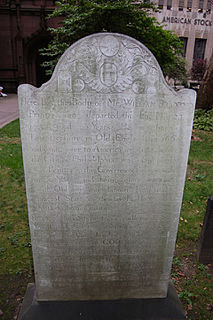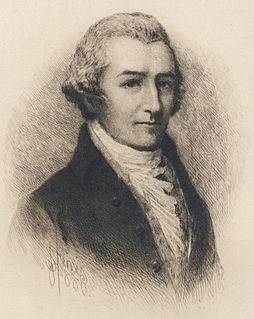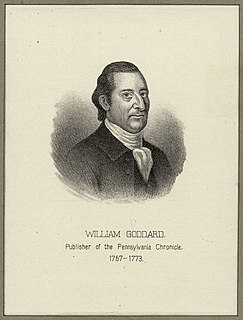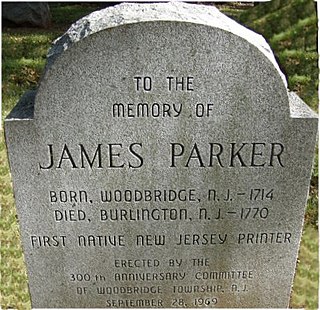
The Whiskey Rebellion was a violent tax protest in the United States beginning in 1791 and ending in 1794 during the presidency of George Washington, ultimately under the command of American Revolutionary War veteran Major James McFarlane. The so-called "whiskey tax" was the first tax imposed on a domestic product by the newly formed federal government. Beer was difficult to transport and spoiled more easily than rum and whiskey. Rum distillation in the United States had been disrupted during the Revolutionary War, and whiskey distribution and consumption increased after the Revolutionary War. The "whiskey tax" became law in 1791, and was intended to generate revenue for the war debt incurred during the Revolutionary War. The tax applied to all distilled spirits, but consumption of American whiskey was rapidly expanding in the late 18th century, so the excise became widely known as a "whiskey tax". Farmers of the western frontier were accustomed to distilling their surplus rye, barley, wheat, corn, or fermented grain mixtures to make whiskey. These farmers resisted the tax. In these regions, whiskey often served as a medium of exchange. Many of the resisters were war veterans who believed that they were fighting for the principles of the American Revolution, in particular against taxation without local representation, while the federal government maintained that the taxes were the legal expression of Congressional taxation powers.

Common Sense is a 47-page pamphlet written by Thomas Paine in 1775–1776 advocating independence from Great Britain to people in the Thirteen Colonies. Writing in clear and persuasive prose, Paine marshaled moral and political arguments to encourage common people in the Colonies to fight for egalitarian government. It was published anonymously on January 10, 1776, at the beginning of the American Revolution and became an immediate sensation.

William Bradford was an early English printer and publisher in colonial British America. He is best known as the founder of the press in the Middle colonies of the Thirteen Colonies and the head of a family that included printers and publishers for 140 years. He was also known for controversies regarding freedom of the press. He operated continuously printing establishments for sixty-two years. He started his printing career in London and emigrated to America in 1685. He established Pennsylvania's first printing press. He established with others the initial paper mill in the Thirteen American Colonies.

William Bradford was a printer, soldier, and leader during the American Revolution from Philadelphia.

Andrew Bradford was an early American printer in colonial Philadelphia. He published the first newspaper in Philadelphia, The American Weekly Mercury, beginning in 1719, as well as the first magazine in America in 1741.

John Peter Zenger (October 26, 1697 – July 28, 1746) was a German printer and journalist in New York City. Zenger printed The New York Weekly Journal. He was accused of libel in 1734 by William Cosby, the royal governor of New York, but the jury acquitted Zenger, who became a symbol for freedom of the press.

George Ord was an American zoologist who specialized in North American ornithology and mammology. Based in part on specimens collected by Lewis and Clark in the North American interior, Ord's article "Zoology of North America" (1815), which was published in the second American edition of William Guthrie's Geographical, Historical, and Commercial Grammar, has been recognized as the "first systematic zoology of America by an American".

Thomas Fitzsimons was an Irish-American merchant and statesman of Philadelphia. He represented Pennsylvania in the Continental Congress, the Constitutional Convention, and the U.S. Congress. He was a signatory of the Constitution of the United States and is considered one of the Founding Fathers of the United States.

The Pittsburgh Post-Gazette, also known simply as the PG, is the largest newspaper serving metropolitan Pittsburgh, Pennsylvania. Descended from the Pittsburgh Gazette, established in 1786 as the first newspaper published west of the Allegheny Mountains, the paper has existed under its present title since 1927.

Pennsylvania was the site of key events and places related to the American Revolution. The state, and especially the city of Philadelphia, played a critical role in the American Revolution.

William Goddard was an early American patriot, publisher, printer and postal inspector. He was born in New London, Connecticut and lived through the American Revolution era. He was a staunch anti-imperialist and an ardent defender of the fundamental American ideals of freedom of the press and speech. Goddard served as an apprentice printer under James Parker and in 1762 became an early American publisher who eventually established four newspapers during the American colonial period. For a short time he was also a postmaster of Providence, Rhode Island. Later his newspaper partnership with Benjamin Franklin in Philadelphia would play an important role in the development of Franklin's ideas for a postal system in the soon to be united colonies. Goddard's association with Franklin while he was serving as the Postmaster in Philadelphia played an important role when they were introducing many of the reforms and improvements needed in the colonial postal system currently in use.

The Pennsylvania Chronicle and Universal Advertiser was an American colonial newspaper founded in 1767 that was published in Philadelphia, Pennsylvania, prior to the American Revolution and was founded by William Goddard and his business partners Joseph Galloway and Thomas Wharton. Benjamin Franklin, an associate of Galloway, was also a partner with the Chronicle.
Samuel Keimer (1689–1742) was an English printer and emigrant. He was the original founder of the Pennsylvania Gazette. On October 2, 1729, Benjamin Franklin bought this newspaper.

James Parker was a colonial American printer, publisher, and postmaster. He published a wide variety of materials, including newspapers, government documents, magazines, and almanacs. He was a journalist in the provinces of New Jersey, New York, and Connecticut and owned several printing businesses in his lifetime. Parker worked closely with Benjamin Franklin in the printing trade, and Franklin even financed some of Parker's businesses as a silent partner.

The Busy-Body was a pen name used by Benjamin Franklin and Joseph Breintnall in a column printed in The American Weekly Mercury, an early American newspaper founded and published by Andrew Bradford. There are 32 letters in "The Busy-Body" series. The essays were printed in 1729.

Julia H. Scott was an American author who had the distinction of being the Poet of Sheshequin. She wrote numerous articles of prose and poetry, which were published in many of the most popular literary periodicals in the U.S. She was a prominent literary figure in the Universalist religion, along with Sarah Carter Edgarton Mayo and Caroline Mehitable Fisher Sawyer.

Early American publishers and printers played a crucial role in the social, religious, political and commercial developments in colonial America, before, during and after the American Revolution. Printing and publishing in the 17th and 18th centuries among the Thirteen Colonies of British North America emerged from religious enthusiasm and the need for bibles and other religious literature, and by the mid 18th century it took on new proportions with the newspapers that began to emerge, largely outspoken about the British colonial government which was widely considered unfair among the colonists.
















